Ceftriaxone dosing, indications, interactions, adverse effects, and more (original) (raw)
Dosing & Uses
AdultPediatric
Dosage Forms & Strengths
injectable solution
- 1g/50mL
- 2g/50mL
powder for injection
- 250mg
- 500mg
- 1g
- 2g
- 10g
- 100g
Intra-abdominal Infections
Complicated, mild-to-moderate, community acquired: 1-2 g/day IV in single daily dose or divided q12hr for 4-7 days, in combination with metronidazole
Acute Bacterial Otitis Media
50 mg/kg IM once
Persistent or treatment failures: 50 mg/kg IV/IM for 3 days
Pelvic Inflammatory Disease
250 mg IM as single dose with doxycycline, with or without metronidazole for 14 days
Prosthetic Joint Infection
2 g IV q24hr for 2-6 weeks; continue treatment until clinical improvement observed and patient is afebrile for 48-72 hr
Meningitis
2 g IV q12hr for 7-14 days
Acute Uncomplicated Pyelonephritis
1-2 g IV qDay
Surgical Prophylaxis
Prophylaxis of surgical infection
1 g IV 0.5-2 hours before procedure
Uncomplicated Gonococcal Infections
Indicated for uncomplicated gonococcal infection of pharynx, cervix, urethra, or rectum
Weight <150 kg: Ceftriaxone 500 mg IM once
Weight ≥150 kg: Ceftriaxone 1,000 mg IM once
If chlamydial infection has not been excluded, add doxycycline 100 mg BID x 7 days, or if pregnant give azithromycin 1,000 mg
Update to CDC’s Treatment Guidelines for Gonococcal Infection, 2020
Sexual assault
- Indicated for prophylaxis of sexually transmitted diseases (STDs) such as gonorrhea after sexual assault per CDC STD Treatment Guidelines 2021
Adolescent and adult females
- Ceftriaxone 500 mg (or 1,000 mg if weight >150 kg) IM once, PLUS
- Doxycycline 100 mg BID PO x 7 days, PLUS
- Metronidazole 500 mg PO BID x 7 days
Adolescent and adult males
- Ceftriaxone 500 mg (or 1,000 mg if weight >150 kg) IM once, PLUS
- Doxycycline 100 mg BID PO x 7 days
Septic/toxic Shock (Off-label)
2 g IV once daily; with clindamycin for toxic shock
Acute Epididymitis (Off-label)
Sexually transmitted chlamydia and gonorrhea
- Ceftriaxone 250 mg IM X 1 dose PLUS
- Doxycycline 100 mg PO BID for 10 days
Sexually transmitted chlamydia, gonorrhea, and enteric organisms
- Men who practice insertive anal sex
- Ceftriaxone 250 mg IM X 1 dose PLUS
- Levofloxacin 500 mg PO qDay for 10 days OR
- Ofloxacin 300 mg PO BID for 10 days
Enteric organisms
- Levofloxacin 500 mg PO qDay for 10 days OR
- Ofloxacin 300 mg PO BID for 10 days
Skin and Soft Necrotizing Infection (Off-label)
Due to Aeromonas hydrophilia: 1-2 g IV qDay in combination with doxycycline
Due to Vibrio vulnificus; 1 g IV qDay in combination with doxycycline
Continue treatment until further debridement not necessary, clinical improvement observed, and patient is afebrile for 48-72 hr
Severe Acute Bacterial Rhinosinusitis (Off-label)
Infection requiring hospitalization: 1-2 g IV q12-24hr for 5-7 days
Other Gonococcal Infections (Off-label)
Gonococcal conjunctivitis: 1 g IM once
Disseminated gonococcal infection: 1 g/day IV/IM; continued for at least 24-48 hours after improvement is observed, then continued with cefixime 400 mg PO q12hr to complete at least 1 week of therapy
Gonococcal endocarditis: 1-2 g IV q12hr for 4 weeks
Gonococcal meningitis: 1-2 g IV q12hr for 10-14 days
Acute epididymitis: 250 mg IM once with doxycycline
Dosing Considerations
Susceptible organisms
- Anaerobic cocci, Bacteroides fragilis, Borrelia burgdorferi, Clostridium spp, Enterobacter spp, Escherichia coli, Haemophilus influenzae, Klebsiella spp, Morganella morganii, Neisseria gonorrhoeae, Neisseria meningitidis, Proteus mirabilis, Providencia rettgeri, Pseudomonas spp, Serratia spp, Staphylococcus aureus, Streptococcus pneumoniae, Streptococcus pyogenes
Dosage Forms & Strengths
injectable solution
- 1g/50mL
- 2g/50mL
powder for injection
- 250mg
- 500mg
- 1g
- 2g
Acute Bacterial Otitis Media
50 mg/kg IM in single dose; not to exceed 1 g
Epiglottis (Off-label)
100 mg/kg/day IV on first day; follow with 50 mg/kg on day 2 or 75 mg/kg qDay for 10-14 days
Meningitis
100 mg/kg/day IV/IM in single daily dose or divided q12hr for 7-14 days; not to exceed 4 g/day
Serious Infections Other Than Meningitis
50-75 mg/kg/day IV/IM divided q12hr for 7-14 days
Skin/Skin Structure Infections
>12 years: 1-2 g/day IV/IM in single daily dose or divided q12hr for 7-14 days, depending on type and severity of infection
Gonococcal Infections
Neonates
- Ophthalmia neonatorum: 25-50 mg/kg IV/IM once; not to exceed 125 mg
- Disseminated gonococcal infections and gonococcal scalp abscesses: 25-50 mg/kg/day IV/IM in single daily dose for 7 days; if meningitis is documented, treat for 10-14 days
- Prophylaxis for infants of mothers with gonococcal infection: 25-50 mg/kg IV/IM once; not to exceed 125 mg
Children
- <45 kg with uncomplicated gonococcal vulvovaginitis, cervicitis, urethritis, pharyngitis, or proctitis: 125 mg IM once
- <45 kg with bacteremia or arthritis: 50 mg/kg/day IM/IV in single daily dose for 7 days; daily dose not to exceed 1 g
- >45 kg with bacteremia or arthritis: 50 mg/kg/day IM/IV in single daily dose for 7 days
- >45 kg: 1-2 g IV q12hr
Interactions
Interaction Checker
Enter a drug name to check for any interactions. + ceftriaxone

No Interactions Found
Interactions Found
Contraindicated
Serious
Significant - Monitor Closely
Minor
All Interactions Sort By:

Contraindicated (5)
- calcium acetate
ceftriaxone, calcium acetate. Other (see comment). Contraindicated. Comment: Do not use ANY calcium containing solutions (including Ringer or Harmann solutions) in combination with IV ceftriaxone; risk of potentially fatal particulate precipitation in lungs, kidneys. Separate administration by at least 48 hrs. - calcium carbonate
ceftriaxone, calcium carbonate. Other (see comment). Contraindicated. Comment: Do not use ANY calcium containing solutions (including Ringer or Harmann solutions) in combination with IV ceftriaxone; risk of potentially fatal particulate precipitation in lungs, kidneys. Separate by at least 48 hrs. - calcium chloride
ceftriaxone, calcium chloride. Other (see comment). Contraindicated. Comment: Contraindicated in neonates if they require (or are expected to require) treatment with calcium containing IV solutions, including continuous calcium containing infusions such as parenteral nutrition because of the risk of precipitation of ceftriaxone and calcium. Separate IV ceftriaxone and IV calcium by at least 48 hrs. However, in patients other than neonates, ceftriaxone and calcium containing solutions may be administered sequentially of one another if the IV infusion lines are thoroughly flushed between infusions with a compatible fluid. - calcium citrate
ceftriaxone, calcium citrate. Other (see comment). Contraindicated. Comment: Do not use ANY calcium containing solutions (including Ringer or Harmann) in combination with IV ceftriaxone; risk of potentially fatal particulate precipitation in lungs, kidneys. Separate by at least 48 hrs. - calcium gluconate
ceftriaxone, calcium gluconate. Other (see comment). Contraindicated. Comment: Do not use ANY calcium containing solutions (including Ringer or Harmann) in combination with IV ceftriaxone; risk of potentially fatal particulate precipitation in lungs, kidneys. Separate by at least 48 hrs.
Serious (5)
- BCG vaccine live
ceftriaxone decreases effects of BCG vaccine live by pharmacodynamic antagonism. Contraindicated. Wait until Abx Tx complete to administer live bacterial vaccine. - cholera vaccine
ceftriaxone, cholera vaccine. pharmacodynamic antagonism. Avoid or Use Alternate Drug. Avoid coadministration of cholera vaccine with systemic antibiotics since these agents may be active against the vaccine strain. Do not administer cholera vaccine to patients who have received oral or parenteral antibiotics within 14 days prior to vaccination. - fondaparinux
ceftriaxone increases effects of fondaparinux by anticoagulation. Avoid or Use Alternate Drug. cephalosporins may decrease prothrombin activity. - microbiota oral
ceftriaxone decreases effects of microbiota oral by pharmacodynamic antagonism. Avoid or Use Alternate Drug. Microbiota oral contains bacterial spores. Antibacterial agents may decrease efficacy if coadministered. Complete antibiotic regimens 2-4 days before initiating microbiota oral. . - typhoid vaccine live
ceftriaxone decreases effects of typhoid vaccine live by pharmacodynamic antagonism. Contraindicated. Wait until Abx Tx complete to administer live bacterial vaccine.
Monitor Closely (37)
- amikacin
ceftriaxone increases toxicity of amikacin by nephrotoxicity and/or ototoxicity. Use Caution/Monitor. Cephalosporins may increase nephrotoxic effect of aminoglycosides. . - atezolizumab
ceftriaxone decreases effects of atezolizumab by unspecified interaction mechanism. Use Caution/Monitor. Coadministration may interfere with therapeutic effects of immune checkpoint inhibitors. - avelumab
ceftriaxone decreases effects of avelumab by unspecified interaction mechanism. Use Caution/Monitor. Coadministration may interfere with therapeutic effects of immune checkpoint inhibitors. - balstilimab
ceftriaxone decreases effects of balstilimab by unspecified interaction mechanism. Use Caution/Monitor. Coadministration may interfere with therapeutic effects of immune checkpoint inhibitors. - bazedoxifene/conjugated estrogens
ceftriaxone will decrease the level or effect of bazedoxifene/conjugated estrogens by altering intestinal flora. Applies only to oral forms of hormone. Low risk of contraceptive failure. Use Caution/Monitor. - camrelizumab
ceftriaxone decreases effects of camrelizumab by unspecified interaction mechanism. Use Caution/Monitor. Coadministration may interfere with therapeutic effects of immune checkpoint inhibitors. - cemiplimab
ceftriaxone decreases effects of cemiplimab by unspecified interaction mechanism. Use Caution/Monitor. Coadministration may interfere with therapeutic effects of immune checkpoint inhibitors. - chloramphenicol
chloramphenicol decreases effects of ceftriaxone by pharmacodynamic antagonism. Use Caution/Monitor. bacteriostatic agents may inhibit the effects of bactericidal agents. - cosibelimab
ceftriaxone decreases effects of cosibelimab by unspecified interaction mechanism. Use Caution/Monitor. Coadministration may interfere with therapeutic effects of immune checkpoint inhibitors. - demeclocycline
demeclocycline decreases effects of ceftriaxone by pharmacodynamic antagonism. Use Caution/Monitor. bacteriostatic agents may inhibit the effects of bactericidal agents. - dienogest/estradiol valerate
ceftriaxone will decrease the level or effect of dienogest/estradiol valerate by altering intestinal flora. Applies only to oral forms of hormone. Low risk of contraceptive failure. Use Caution/Monitor. An alternate or additional form of birth control may be advisable during concomitant use. - dostarlimab
ceftriaxone decreases effects of dostarlimab by unspecified interaction mechanism. Use Caution/Monitor. Coadministration may interfere with therapeutic effects of immune checkpoint inhibitors. - doxycycline
doxycycline decreases effects of ceftriaxone by pharmacodynamic antagonism. Use Caution/Monitor. bacteriostatic agents may inhibit the effects of bactericidal agents. - durvalumab
ceftriaxone decreases effects of durvalumab by unspecified interaction mechanism. Use Caution/Monitor. Coadministration may interfere with therapeutic effects of immune checkpoint inhibitors. - erythromycin base
erythromycin base decreases effects of ceftriaxone by pharmacodynamic antagonism. Use Caution/Monitor. bacteriostatic agents may inhibit the effects of bactericidal agents. - erythromycin ethylsuccinate
erythromycin ethylsuccinate decreases effects of ceftriaxone by pharmacodynamic antagonism. Use Caution/Monitor. bacteriostatic agents may inhibit the effects of bactericidal agents. - erythromycin lactobionate
erythromycin lactobionate decreases effects of ceftriaxone by pharmacodynamic antagonism. Use Caution/Monitor. bacteriostatic agents may inhibit the effects of bactericidal agents. - erythromycin stearate
erythromycin stearate decreases effects of ceftriaxone by pharmacodynamic antagonism. Use Caution/Monitor. bacteriostatic agents may inhibit the effects of bactericidal agents. - gentamicin
ceftriaxone increases toxicity of gentamicin by nephrotoxicity and/or ototoxicity. Use Caution/Monitor. Cephalosporins may increase nephrotoxic effect of aminoglycosides. . - kanamycin
ceftriaxone increases toxicity of kanamycin by nephrotoxicity and/or ototoxicity. Use Caution/Monitor. Cephalosporins may increase nephrotoxic effect of aminoglycosides. . - minocycline
minocycline decreases effects of ceftriaxone by pharmacodynamic antagonism. Use Caution/Monitor. bacteriostatic agents may inhibit the effects of bactericidal agents. - neomycin PO
ceftriaxone increases toxicity of neomycin PO by nephrotoxicity and/or ototoxicity. Use Caution/Monitor. Cephalosporins may increase nephrotoxic effect of aminoglycosides. . - nivolumab
ceftriaxone decreases effects of nivolumab by unspecified interaction mechanism. Use Caution/Monitor. Coadministration may interfere with therapeutic effects of immune checkpoint inhibitors. - pembrolizumab
ceftriaxone decreases effects of pembrolizumab by unspecified interaction mechanism. Use Caution/Monitor. Coadministration may interfere with therapeutic effects of immune checkpoint inhibitors. - penpulimab
ceftriaxone decreases effects of penpulimab by unspecified interaction mechanism. Use Caution/Monitor. Coadministration may interfere with therapeutic effects of immune checkpoint inhibitors. - plazomicin
ceftriaxone increases toxicity of plazomicin by nephrotoxicity and/or ototoxicity. Use Caution/Monitor. Cephalosporins may increase nephrotoxic effect of aminoglycosides. . - probenecid
probenecid will increase the level or effect of ceftriaxone by acidic (anionic) drug competition for renal tubular clearance. Use Caution/Monitor. - retifanlimab
ceftriaxone decreases effects of retifanlimab by unspecified interaction mechanism. Use Caution/Monitor. Coadministration may interfere with therapeutic effects of immune checkpoint inhibitors. - sintilimab
ceftriaxone decreases effects of sintilimab by unspecified interaction mechanism. Use Caution/Monitor. Coadministration may interfere with therapeutic effects of immune checkpoint inhibitors. - sodium picosulfate/magnesium oxide/anhydrous citric acid
ceftriaxone decreases effects of sodium picosulfate/magnesium oxide/anhydrous citric acid by altering metabolism. Use Caution/Monitor. Coadministration with antibiotics decreases efficacy by altering colonic bacterial flora needed to convert sodium picosulfate to active drug. - streptomycin
ceftriaxone increases toxicity of streptomycin by nephrotoxicity and/or ototoxicity. Use Caution/Monitor. Cephalosporins may increase nephrotoxic effect of aminoglycosides. . - tetracycline
tetracycline decreases effects of ceftriaxone by pharmacodynamic antagonism. Use Caution/Monitor. bacteriostatic agents may inhibit the effects of bactericidal agents. - tislelizumab
ceftriaxone decreases effects of tislelizumab by unspecified interaction mechanism. Use Caution/Monitor. Coadministration may interfere with therapeutic effects of immune checkpoint inhibitors. - tobramycin
ceftriaxone increases toxicity of tobramycin by nephrotoxicity and/or ototoxicity. Use Caution/Monitor. Cephalosporins may increase nephrotoxic effect of aminoglycosides. . - toripalimab
ceftriaxone decreases effects of toripalimab by unspecified interaction mechanism. Use Caution/Monitor. Coadministration may interfere with therapeutic effects of immune checkpoint inhibitors. - voclosporin
voclosporin, ceftriaxone. Either increases toxicity of the other by nephrotoxicity and/or ototoxicity. Modify Therapy/Monitor Closely. Coadministration with drugs associated with nephrotoxicity may increase the risk for acute and/or chronic nephrotoxicity. - warfarin
ceftriaxone increases effects of warfarin by unspecified interaction mechanism. Use Caution/Monitor.
Minor (4)
choline magnesium trisalicylate
ceftriaxone will increase the level or effect of choline magnesium trisalicylate by acidic (anionic) drug competition for renal tubular clearance. Minor/Significance Unknown.furosemide
ceftriaxone increases toxicity of furosemide by pharmacodynamic synergism. Minor/Significance Unknown. Increased risk of nephrotoxicity.rose hips
rose hips will increase the level or effect of ceftriaxone by acidic (anionic) drug competition for renal tubular clearance. Minor/Significance Unknown.willow bark
ceftriaxone will increase the level or effect of willow bark by acidic (anionic) drug competition for renal tubular clearance. Minor/Significance Unknown.amikacin
Monitor Closely (1)ceftriaxone increases toxicity of amikacin by nephrotoxicity and/or ototoxicity. Use Caution/Monitor. Cephalosporins may increase nephrotoxic effect of aminoglycosides. .atezolizumab
Monitor Closely (1)ceftriaxone decreases effects of atezolizumab by unspecified interaction mechanism. Use Caution/Monitor. Coadministration may interfere with therapeutic effects of immune checkpoint inhibitors.avelumab
Monitor Closely (1)ceftriaxone decreases effects of avelumab by unspecified interaction mechanism. Use Caution/Monitor. Coadministration may interfere with therapeutic effects of immune checkpoint inhibitors.balstilimab
Monitor Closely (1)ceftriaxone decreases effects of balstilimab by unspecified interaction mechanism. Use Caution/Monitor. Coadministration may interfere with therapeutic effects of immune checkpoint inhibitors.bazedoxifene/conjugated estrogens
Monitor Closely (1)ceftriaxone will decrease the level or effect of bazedoxifene/conjugated estrogens by altering intestinal flora. Applies only to oral forms of hormone. Low risk of contraceptive failure. Use Caution/Monitor.BCG vaccine live
Serious - Use Alternative (1)ceftriaxone decreases effects of BCG vaccine live by pharmacodynamic antagonism. Contraindicated. Wait until Abx Tx complete to administer live bacterial vaccine.calcium acetate
Contraindicated (1)ceftriaxone, calcium acetate. Other (see comment). Contraindicated. Comment: Do not use ANY calcium containing solutions (including Ringer or Harmann solutions) in combination with IV ceftriaxone; risk of potentially fatal particulate precipitation in lungs, kidneys. Separate administration by at least 48 hrs.calcium carbonate
Contraindicated (1)ceftriaxone, calcium carbonate. Other (see comment). Contraindicated. Comment: Do not use ANY calcium containing solutions (including Ringer or Harmann solutions) in combination with IV ceftriaxone; risk of potentially fatal particulate precipitation in lungs, kidneys. Separate by at least 48 hrs.calcium chloride
Contraindicated (1)ceftriaxone, calcium chloride. Other (see comment). Contraindicated. Comment: Contraindicated in neonates if they require (or are expected to require) treatment with calcium containing IV solutions, including continuous calcium containing infusions such as parenteral nutrition because of the risk of precipitation of ceftriaxone and calcium. Separate IV ceftriaxone and IV calcium by at least 48 hrs. However, in patients other than neonates, ceftriaxone and calcium containing solutions may be administered sequentially of one another if the IV infusion lines are thoroughly flushed between infusions with a compatible fluid.calcium citrate
Contraindicated (1)ceftriaxone, calcium citrate. Other (see comment). Contraindicated. Comment: Do not use ANY calcium containing solutions (including Ringer or Harmann) in combination with IV ceftriaxone; risk of potentially fatal particulate precipitation in lungs, kidneys. Separate by at least 48 hrs.calcium gluconate
Contraindicated (1)ceftriaxone, calcium gluconate. Other (see comment). Contraindicated. Comment: Do not use ANY calcium containing solutions (including Ringer or Harmann) in combination with IV ceftriaxone; risk of potentially fatal particulate precipitation in lungs, kidneys. Separate by at least 48 hrs.camrelizumab
Monitor Closely (1)ceftriaxone decreases effects of camrelizumab by unspecified interaction mechanism. Use Caution/Monitor. Coadministration may interfere with therapeutic effects of immune checkpoint inhibitors.cemiplimab
Monitor Closely (1)ceftriaxone decreases effects of cemiplimab by unspecified interaction mechanism. Use Caution/Monitor. Coadministration may interfere with therapeutic effects of immune checkpoint inhibitors.chloramphenicol
Monitor Closely (1)chloramphenicol decreases effects of ceftriaxone by pharmacodynamic antagonism. Use Caution/Monitor. bacteriostatic agents may inhibit the effects of bactericidal agents.cholera vaccine
Serious - Use Alternative (1)ceftriaxone, cholera vaccine. pharmacodynamic antagonism. Avoid or Use Alternate Drug. Avoid coadministration of cholera vaccine with systemic antibiotics since these agents may be active against the vaccine strain. Do not administer cholera vaccine to patients who have received oral or parenteral antibiotics within 14 days prior to vaccination.choline magnesium trisalicylate
Minor (1)ceftriaxone will increase the level or effect of choline magnesium trisalicylate by acidic (anionic) drug competition for renal tubular clearance. Minor/Significance Unknown.cosibelimab
Monitor Closely (1)ceftriaxone decreases effects of cosibelimab by unspecified interaction mechanism. Use Caution/Monitor. Coadministration may interfere with therapeutic effects of immune checkpoint inhibitors.demeclocycline
Monitor Closely (1)demeclocycline decreases effects of ceftriaxone by pharmacodynamic antagonism. Use Caution/Monitor. bacteriostatic agents may inhibit the effects of bactericidal agents.dienogest/estradiol valerate
Monitor Closely (1)ceftriaxone will decrease the level or effect of dienogest/estradiol valerate by altering intestinal flora. Applies only to oral forms of hormone. Low risk of contraceptive failure. Use Caution/Monitor. An alternate or additional form of birth control may be advisable during concomitant use.dostarlimab
Monitor Closely (1)ceftriaxone decreases effects of dostarlimab by unspecified interaction mechanism. Use Caution/Monitor. Coadministration may interfere with therapeutic effects of immune checkpoint inhibitors.doxycycline
Monitor Closely (1)doxycycline decreases effects of ceftriaxone by pharmacodynamic antagonism. Use Caution/Monitor. bacteriostatic agents may inhibit the effects of bactericidal agents.durvalumab
Monitor Closely (1)ceftriaxone decreases effects of durvalumab by unspecified interaction mechanism. Use Caution/Monitor. Coadministration may interfere with therapeutic effects of immune checkpoint inhibitors.erythromycin base
Monitor Closely (1)erythromycin base decreases effects of ceftriaxone by pharmacodynamic antagonism. Use Caution/Monitor. bacteriostatic agents may inhibit the effects of bactericidal agents.erythromycin ethylsuccinate
Monitor Closely (1)erythromycin ethylsuccinate decreases effects of ceftriaxone by pharmacodynamic antagonism. Use Caution/Monitor. bacteriostatic agents may inhibit the effects of bactericidal agents.erythromycin lactobionate
Monitor Closely (1)erythromycin lactobionate decreases effects of ceftriaxone by pharmacodynamic antagonism. Use Caution/Monitor. bacteriostatic agents may inhibit the effects of bactericidal agents.erythromycin stearate
Monitor Closely (1)erythromycin stearate decreases effects of ceftriaxone by pharmacodynamic antagonism. Use Caution/Monitor. bacteriostatic agents may inhibit the effects of bactericidal agents.fondaparinux
Serious - Use Alternative (1)ceftriaxone increases effects of fondaparinux by anticoagulation. Avoid or Use Alternate Drug. cephalosporins may decrease prothrombin activity.furosemide
Minor (1)ceftriaxone increases toxicity of furosemide by pharmacodynamic synergism. Minor/Significance Unknown. Increased risk of nephrotoxicity.gentamicin
Monitor Closely (1)ceftriaxone increases toxicity of gentamicin by nephrotoxicity and/or ototoxicity. Use Caution/Monitor. Cephalosporins may increase nephrotoxic effect of aminoglycosides. .kanamycin
Monitor Closely (1)ceftriaxone increases toxicity of kanamycin by nephrotoxicity and/or ototoxicity. Use Caution/Monitor. Cephalosporins may increase nephrotoxic effect of aminoglycosides. .microbiota oral
Serious - Use Alternative (1)ceftriaxone decreases effects of microbiota oral by pharmacodynamic antagonism. Avoid or Use Alternate Drug. Microbiota oral contains bacterial spores. Antibacterial agents may decrease efficacy if coadministered. Complete antibiotic regimens 2-4 days before initiating microbiota oral. .minocycline
Monitor Closely (1)minocycline decreases effects of ceftriaxone by pharmacodynamic antagonism. Use Caution/Monitor. bacteriostatic agents may inhibit the effects of bactericidal agents.neomycin PO
Monitor Closely (1)ceftriaxone increases toxicity of neomycin PO by nephrotoxicity and/or ototoxicity. Use Caution/Monitor. Cephalosporins may increase nephrotoxic effect of aminoglycosides. .nivolumab
Monitor Closely (1)ceftriaxone decreases effects of nivolumab by unspecified interaction mechanism. Use Caution/Monitor. Coadministration may interfere with therapeutic effects of immune checkpoint inhibitors.pembrolizumab
Monitor Closely (1)ceftriaxone decreases effects of pembrolizumab by unspecified interaction mechanism. Use Caution/Monitor. Coadministration may interfere with therapeutic effects of immune checkpoint inhibitors.penpulimab
Monitor Closely (1)ceftriaxone decreases effects of penpulimab by unspecified interaction mechanism. Use Caution/Monitor. Coadministration may interfere with therapeutic effects of immune checkpoint inhibitors.plazomicin
Monitor Closely (1)ceftriaxone increases toxicity of plazomicin by nephrotoxicity and/or ototoxicity. Use Caution/Monitor. Cephalosporins may increase nephrotoxic effect of aminoglycosides. .probenecid
Monitor Closely (1)probenecid will increase the level or effect of ceftriaxone by acidic (anionic) drug competition for renal tubular clearance. Use Caution/Monitor.retifanlimab
Monitor Closely (1)ceftriaxone decreases effects of retifanlimab by unspecified interaction mechanism. Use Caution/Monitor. Coadministration may interfere with therapeutic effects of immune checkpoint inhibitors.rose hips
Minor (1)rose hips will increase the level or effect of ceftriaxone by acidic (anionic) drug competition for renal tubular clearance. Minor/Significance Unknown.sintilimab
Monitor Closely (1)ceftriaxone decreases effects of sintilimab by unspecified interaction mechanism. Use Caution/Monitor. Coadministration may interfere with therapeutic effects of immune checkpoint inhibitors.sodium picosulfate/magnesium oxide/anhydrous citric acid
Monitor Closely (1)ceftriaxone decreases effects of sodium picosulfate/magnesium oxide/anhydrous citric acid by altering metabolism. Use Caution/Monitor. Coadministration with antibiotics decreases efficacy by altering colonic bacterial flora needed to convert sodium picosulfate to active drug.streptomycin
Monitor Closely (1)ceftriaxone increases toxicity of streptomycin by nephrotoxicity and/or ototoxicity. Use Caution/Monitor. Cephalosporins may increase nephrotoxic effect of aminoglycosides. .tetracycline
Monitor Closely (1)tetracycline decreases effects of ceftriaxone by pharmacodynamic antagonism. Use Caution/Monitor. bacteriostatic agents may inhibit the effects of bactericidal agents.tislelizumab
Monitor Closely (1)ceftriaxone decreases effects of tislelizumab by unspecified interaction mechanism. Use Caution/Monitor. Coadministration may interfere with therapeutic effects of immune checkpoint inhibitors.tobramycin
Monitor Closely (1)ceftriaxone increases toxicity of tobramycin by nephrotoxicity and/or ototoxicity. Use Caution/Monitor. Cephalosporins may increase nephrotoxic effect of aminoglycosides. .toripalimab
Monitor Closely (1)ceftriaxone decreases effects of toripalimab by unspecified interaction mechanism. Use Caution/Monitor. Coadministration may interfere with therapeutic effects of immune checkpoint inhibitors.typhoid vaccine live
Serious - Use Alternative (1)ceftriaxone decreases effects of typhoid vaccine live by pharmacodynamic antagonism. Contraindicated. Wait until Abx Tx complete to administer live bacterial vaccine.voclosporin
Monitor Closely (1)voclosporin, ceftriaxone. Either increases toxicity of the other by nephrotoxicity and/or ototoxicity. Modify Therapy/Monitor Closely. Coadministration with drugs associated with nephrotoxicity may increase the risk for acute and/or chronic nephrotoxicity.warfarin
Monitor Closely (1)ceftriaxone increases effects of warfarin by unspecified interaction mechanism. Use Caution/Monitor.willow bark
Minor (1)ceftriaxone will increase the level or effect of willow bark by acidic (anionic) drug competition for renal tubular clearance. Minor/Significance Unknown.
Adverse Effects
>10%
Induration after IM injection (5-17%)
1-10%
Eosinophilia (6%)
Thrombocytosis (5%)
Diarrhea (3%)
Elevated hepatic transaminases (3%)
Leukopenia (2%)
Rash (2%)
Increased blood urea nitrogen (BUN) (1%)
Induration at IV site (1%)
Pain (1%)
<1%
Agranulocytosis
Anaphylaxis
Anemia
Basophilia
Bronchospasm
Candidiasis
Chills
Diaphoresis
Dizziness
Dysgeusia
Flushing
Gallstones
Glycosuria
Headache
Hematuria
Hemolytic anemia
Increased alkaline phosphatase or bilirubin
Increased creatinine
Jaundice
Leukocytosis
Lymphocytosis
Lymphopenia
Monocytosis
Nausea
Neutropenia
Phlebitis
Prolonged or decreased prothrombin time (PT)
Pruritus
Renal stones
Serum sickness
Thrombocytopenia
Urinary casts
Vaginitis
Vomiting
Postmarketing reports
Pancreatitis, stomatitis and glossitis
Oliguria, ureteric obstruction, post-renal acute renal failure
Exanthema, allergic dermatitis, urticaria, edema; acute generalized exanthematous pustulosis (AGEP) and isolated cases of severe cutaneous adverse reactions (erythema multiforme, Stevens-Johnson syndrome or Lyell’s syndrome/toxic epidermal necrolysis)
Neurological adverse reactions, including encephalopathy, seizures, myoclonus, and non-convulsive status epilepticus
Warnings
Contraindications
Documented hypersensitivity; hyperbilirubinemic neonates, particularly those who are premature; neonates <28 days if they receive calcium-containing IV products
Intravenous administration of ceftriaxone solutions containing lidocaine
Lidocaine contraindications if lidocaine solution used as solvent with ceftriaxone for intramuscular injection
Concomitant calcium-ceftriaxone administration
- Risk of fatal calcium-ceftriaxone precipitant formation in lungs and kidneys of term and preterm neonates
- <28 days: Do not give any calcium-containing IV drugs or products within 48 hours of ceftriaxone (within 5 days if neonate is <10 days, per Health Canada)
- >28 days: Calcium may be given in sequence after ceftriaxone once infusion line has been flushed, but not simultaneously in same bag or line (chemically incompatible)
Cautions
10-g pharmacy bulk package should not be used for direct infusion
Immune-mediated hemolytic anemia reported; if patient develops anemia while on ceftriaxone, stop antibiotic until etiology determined; severe hemolytic anemia, including fatalities, reported in both adults and children
May increase INR, especially in nutritionally deficient patients, hepatic or renal disease or prolonged treatment
Dosage must be adjusted in severe renal insufficiency (high dosages may cause CNS toxicity)
Superinfections and promotion of nonsusceptible organisms may occur with prolonged use or repeated therapy
Use with caution in patients with history of penicillin allergy
Use with caution in patients with history of GI disease, especially colitis
Use with caution in breast-feeding women; drug may displace bilirubin from albumin-binding sites, increasing risk of kernicterus
Abnormal gallbladder sonograms reported, possibly the result of ceftriaxone-calcium precipitates; discontinue if signs or symptoms of gallbladder disease occur
Ceftriaxone-calcium precipitates in urinary tract observed in patients receiving ceftriaxone; may be detected as sonographic abnormalities; patients may be asymptomatic or may develop symptoms of urolithiasis, and ureteral obstruction and post-renal acute renal failure; appears to be reversible upon discontinuation of therapy and institution of appropriate management; ensure adequate hydration; discontinue therapy in patients who develop signs and symptoms suggestive of urolithiasis, oliguria or renal failure and/or the sonographic findings
Clostridium difficile-associated diarrhea (CDAD reported with use of nearly all antibacterial agents, including ceftriaxone; If CDAD suspected or confirmed, may consider discontinuing ongoing antibacterial use not directed against C. difficile; institute appropriate fluid and electrolyte management, protein supplementation, antibacterial treatment of C. difficile, and surgical evaluation
Pancreatitis secondary to biliary obstruction reported rarely; use with caution in patients with gallbladder, biliary tract, liver, or pancreatic disease and patients with history of penicillin hypersensitivity
Inform patients that use of local anesthetics may cause methemoglobinemia, which must be treated promptly; advise patients or caregivers to stop use and seek immediate medical attention if they or someone in their care experience the following signs or symptoms: pale, gray, or blue colored skin (cyanosis); headache; rapid heart rate; shortness of breath; lightheadedness; or fatigue
Use with caution in patients with history of GI disease (eg, colitis)
Neurological adverse reactions
- Serious neurological adverse reactions reported during postmarketing surveillance with ceftriaxone use; reactions include encephalopathy (disturbance of consciousness including somnolence, lethargy, and confusion), seizures, myoclonus, and non-convulsive status epilepticus
- Some cases occurred in patients with severe renal impairment who did not receive appropriate dosage adjustment; however, in other cases, neurological adverse reactions occurred in patients receiving an appropriate dosage adjustment
- The neurological adverse reactions were reversible and resolved after discontinuation; if neurological adverse reactions associated with therapy occur, discontinue treatment and institute appropriate supportive measures
- Make appropriate dosage adjustments in patients with severe renal impairment
Pregnancy & Lactation
Pregnancy
Available data from published prospective cohort studies, case series, and case reports over several decades in pregnant women have not established a drug-associated risk of major birth defects, miscarriage, or adverse maternal or fetal outcomes
The estimated background risk of major birth defects and miscarriage for the indicated population is unknown; all pregnancies have a background risk of birth defect, loss, or other adverse outcomes
Animal data
- In animal reproduction studies, no adverse developmental effects were observed when ceftriaxone was administered to pregnant rats at doses up to approximately 2.8 times clinical dose of 2 g/day
Lactation
Data from published literature report that ceftriaxone is present in human milk; there are no data on effects of drug on breastfed child or on milk production
The developmental and health benefits of breastfeeding should be considered along with mother’s clinical need for drug and dextrose injection and any potential adverse effects on breastfed child from antibiotic for Injection and dextrose injection or from mother’s underlying condition
Pregnancy Categories
A: Generally acceptable. Controlled studies in pregnant women show no evidence of fetal risk.
B: May be acceptable. Either animal studies show no risk but human studies not available or animal studies showed minor risks and human studies done and showed no risk.
C: Use with caution if benefits outweigh risks. Animal studies show risk and human studies not available or neither animal nor human studies done.
D: Use in LIFE-THREATENING emergencies when no safer drug available. Positive evidence of human fetal risk.
X: Do not use in pregnancy. Risks involved outweigh potential benefits. Safer alternatives exist.
NA: Information not available.
Pharmacology
Mechanism of Action
Third-generation cephalosporin with broad-spectrum gram-negative activity; has lower efficacy against gram-positive organisms but higher efficacy against resistant organisms; highly stable in presence of beta-lactamases (penicillinase and cephalosporinase) of gram-negative and gram-positive bacteria; bactericidal activity results from inhibiting cell-wall synthesis by binding to 1 or more penicillin-binding proteins; exerts antimicrobial effect by interfering with synthesis of peptidoglycan (major structural component of bacterial cell wall); bacteria eventually lyse because activity of cell-wall autolytic enzymes continues while cell-wall assembly is arrested
Absorption
IM preparation well absorbed
Peak plasma time: 2-3 hr (IM)
Distribution
Distributed throughout body, including gallbladder, lungs, bone, bile, and CSF (higher concentrations achieved when meninges are inflamed); crosses placenta; enters amniotic fluid and breast milk
Protein bound: 85-95%
Vd: 6-14 L
Metabolism
Metabolized in liver
Elimination
Half-life: 5-9 hr (normal hepatic and renal function); 12-16 hr (mild-to-severe renal impairment)
Excretion: Urine (33-67% as unchanged drug), feces
Administration
IV Incompatibilities
Solution: LR (at drug concentrations >10 mg/mL; compatible at 1 mg/mL)
Additive: Aminophylline, clindamycin, linezolid, theophylline, metronidazole (at metronidazole 15 g/L with ceftriaxone 20 g/L; compatible at metronidazole 7.5 g/L with ceftriaxone 10 g/L)
Syringe: Lidocaine (variable)
Y-site: Alatrofloxacin, amphotericin B cholesteryl sulfate, amsacrine, filgrastim, fluconazole, labetalol, pentamidine, vinorelbine, vancomycin
General: Calcium-containing drugs
IV/IM Preparation
Dilutions are stable for 24 hours at room temperature
IV
- Reconstitute to ~100 mg/mL, then dilute further to 10-40 mg/mL
- 10 g bulk package: not for direct IV infusion; reconstitute in 95 mL, then use appropriate portions for further dilution
- 10-g bulk package not for direct IV injection; reconstitute in 95 mL, then use appropriate portions for further dilution
IM
- Dilute with compatible fluid (eg, SWI, NS, D5W) to 250-350 mg/mL
IV/IM Administration
IV: Infuse intermittently over 30 minutes
IM: Inject deep into large muscle mass
Images

| BRAND | FORM. | UNIT PRICE | PILL IMAGE |
|---|---|---|---|
| ceftriaxone intravenous- | 1 gram vial |  |
|
| ceftriaxone intravenous- | 1 gram vial |  |
|
| ceftriaxone intravenous- | 2 gram vial | 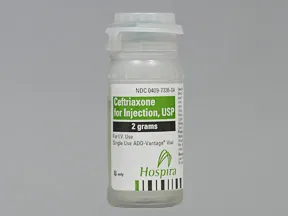 |
|
| ceftriaxone injection- | 1 gram vial | 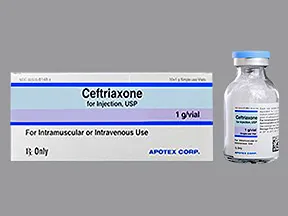 |
|
| ceftriaxone injection- | 2 gram vial | 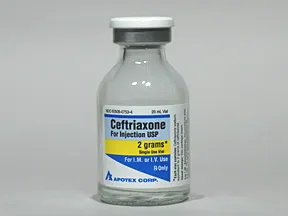 |
|
| ceftriaxone injection- | 500 mg vial |  |
|
| ceftriaxone injection- | 500 mg vial | 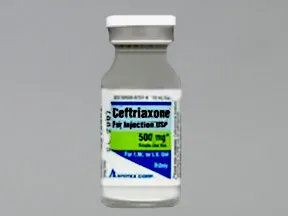 |
|
| ceftriaxone injection- | 250 mg vial | 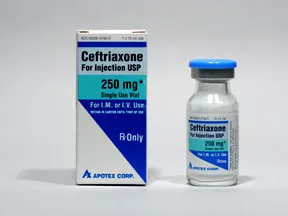 |
|
| ceftriaxone injection- | 250 mg vial |  |
|
| ceftriaxone injection- | 2 gram vial | 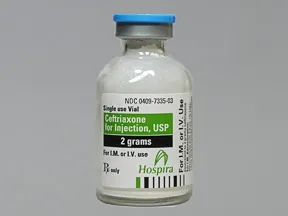 |
|
| ceftriaxone injection- | 250 mg vial | 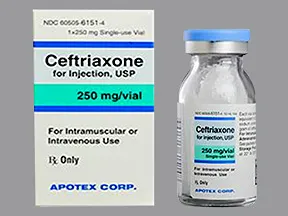 |
|
| ceftriaxone injection- | 10 gram vial | 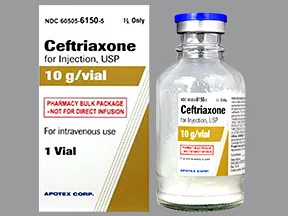 |
|
| ceftriaxone injection- | 1 gram vial |  |
|
| ceftriaxone injection- | 2 gram vial | 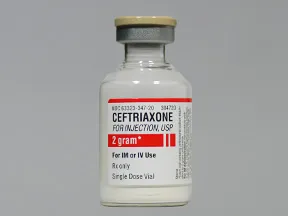 |
|
| ceftriaxone injection- | 10 gram vial | 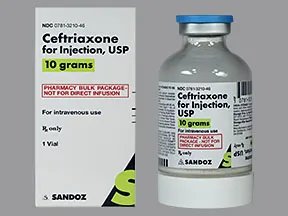 |
|
| ceftriaxone injection- | 1 gram vial | 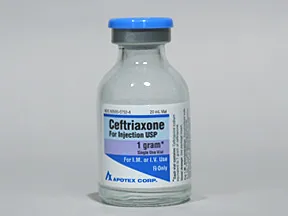 |
|
| ceftriaxone injection- | 500 mg vial | 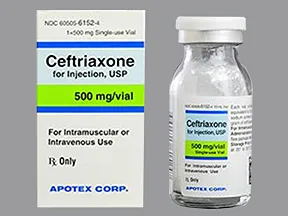 |
|
| ceftriaxone injection- | 500 mg vial |  |
|
| ceftriaxone injection- | 2 gram vial |  |
|
| ceftriaxone injection- | 2 gram vial |  |
|
| ceftriaxone injection- | 500 mg vial |  |
|
| ceftriaxone injection- | 250 mg vial | 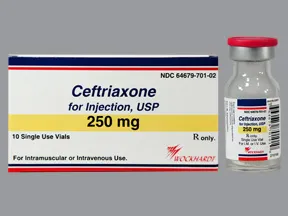 |
|
| ceftriaxone injection- | 250 mg vial | 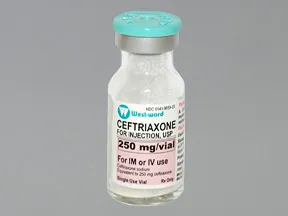 |
|
| ceftriaxone injection- | 500 mg vial | 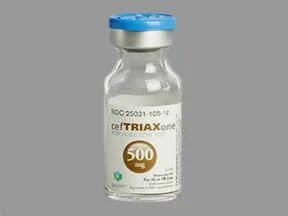 |
|
| ceftriaxone injection- | 2 gram vial | 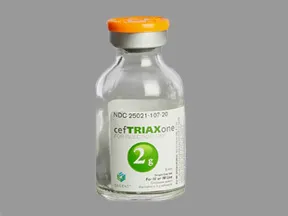 |
|
| ceftriaxone injection- | 2 gram vial | 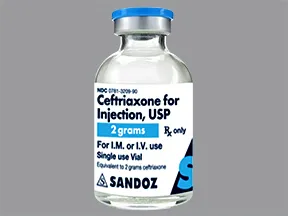 |
|
| ceftriaxone injection- | 500 mg vial | 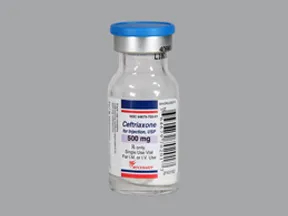 |
|
| ceftriaxone injection- | 500 mg vial | 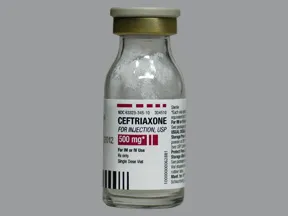 |
|
| ceftriaxone injection- | 2 gram vial | 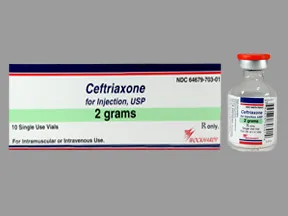 |
|
| ceftriaxone injection- | 2 gram vial |  |
|
| ceftriaxone injection- | 500 mg vial |  |
|
| ceftriaxone injection- | 2 gram vial |  |
|
| ceftriaxone injection- | 1 gram vial | 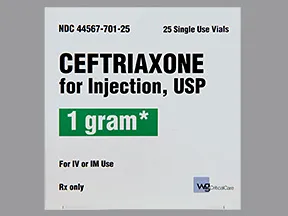 |
|
| ceftriaxone injection- | 500 mg vial | 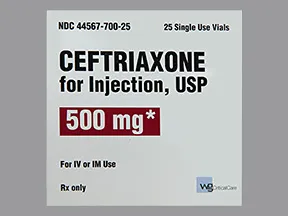 |
|
| ceftriaxone injection- | 10 gram vial | 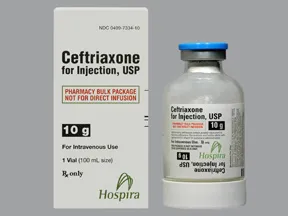 |
|
| ceftriaxone injection- | 500 mg vial | 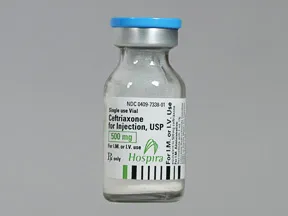 |
|
| ceftriaxone injection- | 1 gram vial | 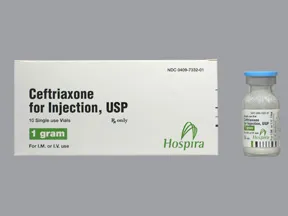 |
|
| ceftriaxone injection- | 10 gram vial | 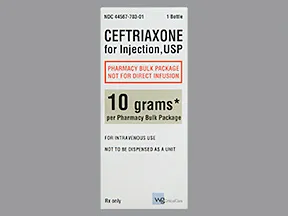 |
|
| ceftriaxone injection- | 250 mg vial |  |
|
| ceftriaxone injection- | 250 mg vial |  |
|
| ceftriaxone injection- | 1 gram vial | 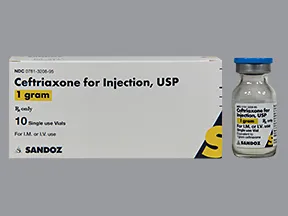 |
|
| ceftriaxone injection- | 1 gram vial | 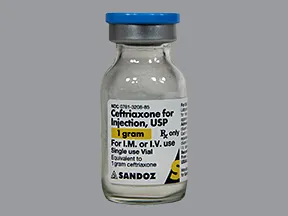 |
|
| ceftriaxone injection- | 500 mg vial |  |
|
| ceftriaxone injection- | 500 mg vial | 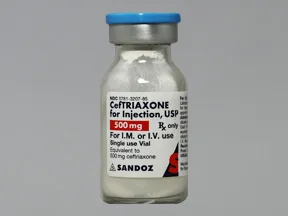 |
|
| ceftriaxone injection- | 250 mg vial | 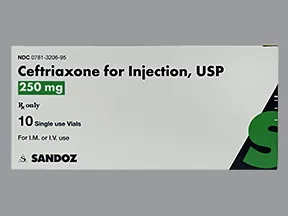 |
|
| ceftriaxone injection- | 1 gram vial | 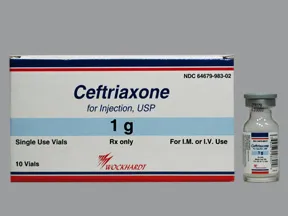 |
|
| ceftriaxone injection- | 1 gram vial |  |
|
| ceftriaxone injection- | 10 gram vial | 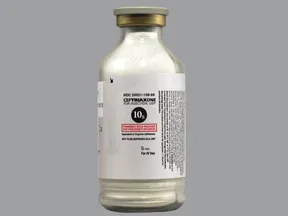 |
|
| ceftriaxone injection- | 250 mg vial | 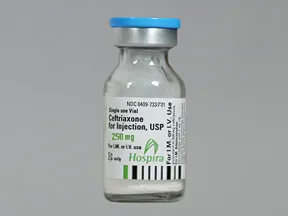 |
|
| ceftriaxone injection- | 10 gram vial | 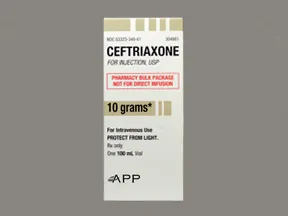 |
|
| ceftriaxone injection- | 250 mg vial | 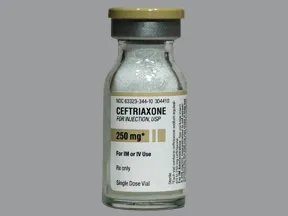 |
|
| ceftriaxone injection- | 1 gram vial |  |
Copyright © 2010 First DataBank, Inc.
Patient Handout


CEFTRIAXONE - INJECTION
(SEF-trye-AX-one)
COMMON BRAND NAME(S): Rocephin
USES: Ceftriaxone is used to treat a wide variety of bacterial infections. This medication belongs to a class of drugs known as cephalosporin antibiotics. It works by stopping the growth of bacteria.This drug is not recommended for use in newborns with high blood bilirubin levels and premature infants due to increased risk of side effects. Ask the doctor or pharmacist for details.
HOW TO USE: This medication is given by injection into a muscle or vein as directed by your doctor, usually once or twice daily. The dosage is based on your medical condition and response to treatment. Drink plenty of fluids while using this medication unless your doctor directs you otherwise.If you are using this medication at home, learn all preparation and usage instructions from your health care professional. Avoid mixing ceftriaxone with IV fluids that have calcium in them (such as Ringer's solution, Hartmann's solution, parenteral nutrition-TPN/PPN). Consult your pharmacist for details about the safe use of IV calcium products in infants, children, and adults (see Precautions section). Before using, check this product visually for particles or discoloration. If either is present, do not use the liquid. Learn how to store and discard medical supplies safely.If you are using the frozen pre-mixed solution, thaw the bag at room temperature or in the refrigerator. If the bag is thawed in the refrigerator, let it sit at room temperature at least 1 hour before using. Do not thaw by putting in a water bath or microwaving. After thawing, shake well and squeeze the bag to check for leaks. Discard solution if the bag leaks. Do not re-freeze the solution after thawing.For the best effect, use this antibiotic at evenly spaced times. To help you remember, use this medication at the same time(s) every day.Continue to use this medication for the full time prescribed, even if symptoms disappear after a few days. Stopping the medication too early may result in a return of the infection.Tell your doctor if your condition lasts or gets worse.
SIDE EFFECTS: Swelling, redness, or pain at the injection site may occur. If any of these effects last or get worse, tell your doctor or pharmacist promptly.Remember that this medication has been prescribed because your doctor has judged that the benefit to you is greater than the risk of side effects. Many people using this medication do not have serious side effects.Tell your doctor right away if you have any serious side effects, including: easy bruising/bleeding, unusual tiredness, symptoms of gallbladder disease (such as stomach/abdominal pain, nausea, vomiting), signs of kidney problems (such as change in the amount of urine), pink/bloody/dark urine, painful/frequent urination, back/side pain, yellowing eyes/skin, uncontrollable movements, confusion, seizures.This medication may rarely cause a severe intestinal condition due to a bacteria called C. difficile. This condition may occur during treatment or weeks to months after treatment has stopped. Tell your doctor right away if you develop: diarrhea that doesn't stop, abdominal or stomach pain/cramping, blood/mucus in your stool.If you have these symptoms, do not use anti-diarrhea or opioid products because they may make symptoms worse.Use of this medication for prolonged or repeated periods may result in oral thrush or a new yeast infection. Contact your doctor if you notice white patches in your mouth, a change in vaginal discharge, or other new symptoms.If ceftriaxone is mixed with a numbing medication (such as lidocaine) before injection into a muscle, it may rarely cause a serious blood problem (methemoglobinemia). Get medical help right away if you have any very serious side effects, including: pale/gray/blue skin, fast heartbeat, shortness of breath.A very serious allergic reaction to this drug is rare. However, get medical help right away if you notice any symptoms of a serious allergic reaction, including: rash, itching/swelling (especially of the face/tongue/throat), severe dizziness, trouble breathing.This is not a complete list of possible side effects. If you notice other effects not listed above, contact your doctor or pharmacist.In the US -Call your doctor for medical advice about side effects. You may report side effects to FDA at 1-800-FDA-1088 or at www.fda.gov/medwatch.In Canada - Call your doctor for medical advice about side effects. You may report side effects to Health Canada at 1-866-234-2345.
PRECAUTIONS: Before using ceftriaxone, tell your doctor or pharmacist if you are allergic to it; or to other antibiotics (such as penicillins, other cephalosporins); or if you have any other allergies. This product may contain inactive ingredients, which can cause allergic reactions or other problems. Talk to your pharmacist for more details.Before using this medication, tell your doctor or pharmacist your medical history, especially of: gallbladder disease, kidney disease, liver disease, stomach/intestinal diseases (such as colitis).Do not give any products by vein that contain calcium (including IV solutions such as Ringer's solution, Hartmann's solution, parenteral nutrition-TPN/PPN) to a newborn less than 1 month old who is receiving this medication. Doing so can cause serious problems in the vital organs.Ceftriaxone may cause live bacterial vaccines (such as typhoid vaccine) to not work well. Tell your health care professional that you are using ceftriaxone before having any immunizations/vaccinations.Before having surgery, tell your doctor or dentist about all the products you use (including prescription drugs, nonprescription drugs, and herbal products).Tell your doctor if you are pregnant before using this medication.This medication passes into breast milk in small amounts and is unlikely to harm a nursing infant. Consult your doctor before breastfeeding.
DRUG INTERACTIONS: Drug interactions may change how your medications work or increase your risk for serious side effects. This document does not contain all possible drug interactions. Keep a list of all the products you use (including prescription/nonprescription drugs and herbal products) and share it with your doctor and pharmacist. Do not start, stop, or change the dosage of any medicines without your doctor's approval.Some products that may interact with this drug include: calcium-containing IV fluids.This medication may interfere with certain lab tests (such as certain urine glucose tests), possibly causing false test results. Make sure lab personnel and all your doctors know you use this drug.
OVERDOSE: If someone has overdosed and has serious symptoms such as passing out or trouble breathing, call 911. Otherwise, call a poison control center right away. US residents can call 1-800-222-1222. Canada residents can call 1-844-764-7669. Symptoms of overdose may include: seizures.
NOTES: Do not share this medication with others.Lab and/or medical tests (such as complete blood count, kidney function tests) should be done while you are using this medication. Keep all medical and lab appointments.
MISSED DOSE: It is important to get each dose of this medication as scheduled. If you miss a dose, ask your doctor or pharmacist right away for a new dosing schedule. Do not double the dose to catch up.
STORAGE: Consult the product instructions and your pharmacist for storage details. Keep all medications away from children and pets.Do not flush medications down the toilet or pour them into a drain unless instructed to do so. Properly discard this product when it is expired or no longer needed. Consult your pharmacist or local waste disposal company.
Information last revised May 2024. Copyright(c) 2024 First Databank, Inc.
IMPORTANT: HOW TO USE THIS INFORMATION: This is a summary and does NOT have all possible information about this product. This information does not assure that this product is safe, effective, or appropriate for you. This information is not individual medical advice and does not substitute for the advice of your health care professional. Always ask your health care professional for complete information about this product and your specific health needs.
Formulary
FormularyPatient Discounts
Adding plans allows you to compare formulary status to other drugs in the same class.
To view formulary information first create a list of plans. Your list will be saved and can be edited at any time.
Adding plans allows you to:
- View the formulary and any restrictions for each plan.
- Manage and view all your plans together – even plans in different states.
- Compare formulary status to other drugs in the same class.
- Access your plan list on any device – mobile or desktop.
The above information is provided for general informational and educational purposes only. Individual plans may vary and formulary information changes. Contact the applicable plan provider for the most current information.
View explanations for tiers and restrictions
| Tier | Description |
|---|---|
| 1 | This drug is available at the lowest co-pay. Most commonly, these are generic drugs. |
| 2 | This drug is available at a middle level co-pay. Most commonly, these are "preferred" (on formulary) brand drugs. |
| 3 | This drug is available at a higher level co-pay. Most commonly, these are "non-preferred" brand drugs. |
| 4 | This drug is available at a higher level co-pay. Most commonly, these are "non-preferred" brand drugs or specialty prescription products. |
| 5 | This drug is available at a higher level co-pay. Most commonly, these are "non-preferred" brand drugs or specialty prescription products. |
| 6 | This drug is available at a higher level co-pay. Most commonly, these are "non-preferred" brand drugs or specialty prescription products. |
| NC | NOT COVERED – Drugs that are not covered by the plan. |
| Code | Definition |
|---|---|
| PA | Prior Authorization Drugs that require prior authorization. This restriction requires that specific clinical criteria be met prior to the approval of the prescription. |
| QL | Quantity Limits Drugs that have quantity limits associated with each prescription. This restriction typically limits the quantity of the drug that will be covered. |
| ST | Step Therapy Drugs that have step therapy associated with each prescription. This restriction typically requires that certain criteria be met prior to approval for the prescription. |
| OR | Other Restrictions Drugs that have restrictions other than prior authorization, quantity limits, and step therapy associated with each prescription. |
Non-Medicare Plans Medicare Plans
From:
To:
The recipient will receive more details and instructions to access this offer.
By clicking send, you acknowledge that you have permission to email the recipient with this information.
From:
To:
The recipient will receive more details and instructions to access this offer.
By clicking send, you acknowledge that you have permission to email the recipient with this information.
Medscape prescription drug monographs are based on FDA-approved labeling information, unless otherwise noted, combined with additional data derived from primary medical literature.